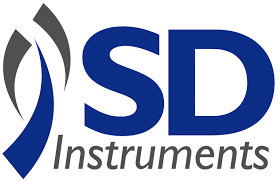This article examines eyeblink conditioning in rabbits and its applications in training and research.
Understanding eyeblink conditioning
Eyeblink conditioning is a type of classical conditioning in which rabbits are trained to relate a conditioned stimulus (e.g., a light or tone) with an unconditioned stimulus (e.g., a puff of air to the eye), causing the rabbit to respond to the conditioned stimulus alone by blinking.
This condition involves the rabbit learning the connection between the stimuli through repeated pairings. As training progresses, the rabbit’s blinking response to the conditioned stimulus becomes more accurate.
Understanding eyeblink conditioning is valuable as it offers insights into learning and memory mechanisms and is applicable to numerous research topics.
Neural mechanisms involved
Eyeblink conditioning in rabbits involves sophisticated neural mechanisms, with the cerebellum playing a pivotal role since it is responsible for coordinating and timing the eyeblink response.
The interpositus nucleus and the cerebellar cortex within the cerebellum are essential in mediating eyeblink conditioning. The interpositus nucleus obtains the conditioned stimulus information and directs signals to the cerebellar cortex, which relays this information to the facial motor nucleus to begin the eyeblink response.
Other brain regions, including the amygdala and hippocampus, also assist in the neural processes underlying eyeblink conditioning.

Image Credit: ArtemisDiana/Shutterstock.com
Applications in research
Eyeblink conditioning in rabbits has been extensively utilized in studies to explore many topics. It serves as a tool for investigating the neural foundation of memory and learning and the impact of genetic manipulations and drugs on these processes.
Scientists have also utilized eyeblink conditioning to investigate neurological conditions, including Alzheimer’s disease and cerebellar dysfunction. Understanding the mechanisms involved in eyeblink conditioning can provide researchers with important insights into these conditions, enabling them to create innovative therapeutic methods.
Eyeblink conditioning has also been employed to investigate the effects of environmental factors, like aging and stress, on memory and learning.
Training and behavioral modification
Training rabbits for eyeblink conditioning comprises steps to understand the link between the conditioned and unconditioned stimulus.
The conditioned stimulus is initially presented concurrently with the unconditioned stimulus, reinforcing the rabbit’s natural eyeblink response. Gradually, the conditioned stimulus is presented before the unconditioned stimulus, and the rabbit learns to expect the puff of air, blinking in response.
The desired eyeblink response is gradually formed using behavioral modification techniques such as shaping and reinforcement. Positive reinforcement, e.g. praise or rewards, is frequently used to motivate the rabbit’s learning and performance.
Repetition and consistency are crucial in training rabbits for eyeblink conditioning, as they support reinforcing the learned association and enhancing the eyeblink response's accuracy.
Future directions
Research on eyeblink conditioning in rabbits further deepens our understanding of learning and memory.
Future studies could investigate the specific neural circuits and molecular mechanisms involved in eyeblink conditioning. Uncovering the complexities of these mechanisms may reveal innovative targets for therapeutic interventions in conditions linked to learning and memory deficits.
Technological advancements, such as optogenetics and neuroimaging techniques, could yield new tools for studying eyeblink conditioning and its underlying neural processes.
Understanding eyeblink conditioning in rabbits may also have implications beyond neuroscience. The ideas of conditioning and behavioral modification can extend to other species and be used in numerous training methods and rehabilitation programs.
About San Diego Instruments, Inc.
For more than 30 years, San Diego Instruments has served the scientific community as a comprehensive resource for the design, manufacture and distribution of behavioral neuroscience research instruments used in human and animal studies. Utilized in laboratories and cited in research papers worldwide, SDI systems have come to represent the industry standard for quality and longevity. Our premier SR-LAB™ is the world’s most widely used startle response system. At SDI, our commitment to developing quality products that stand the test of time is matched only our dedication to excellent customer service. We take pride in our ever-growing core of loyal clientele.
SDI behavioral neuroscience research systems afford you the utmost in quality and performance, giving you the edge in an industry where Power, Flexibility and Ease of Use are everything.
Sponsored Content Policy: News-Medical.net publishes articles and related content that may be derived from sources where we have existing commercial relationships, provided such content adds value to the core editorial ethos of News-Medical.Net which is to educate and inform site visitors interested in medical research, science, medical devices and treatments.